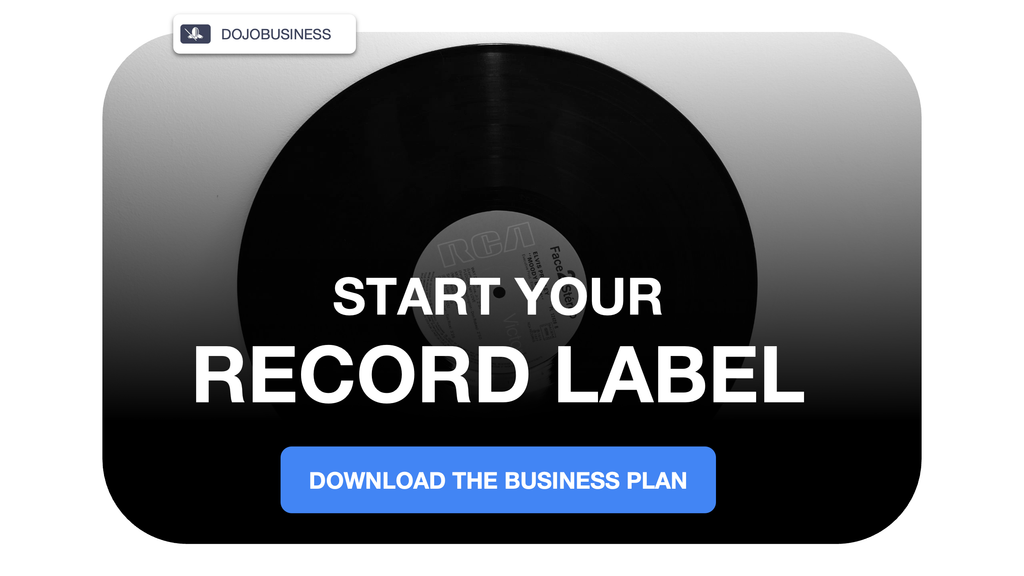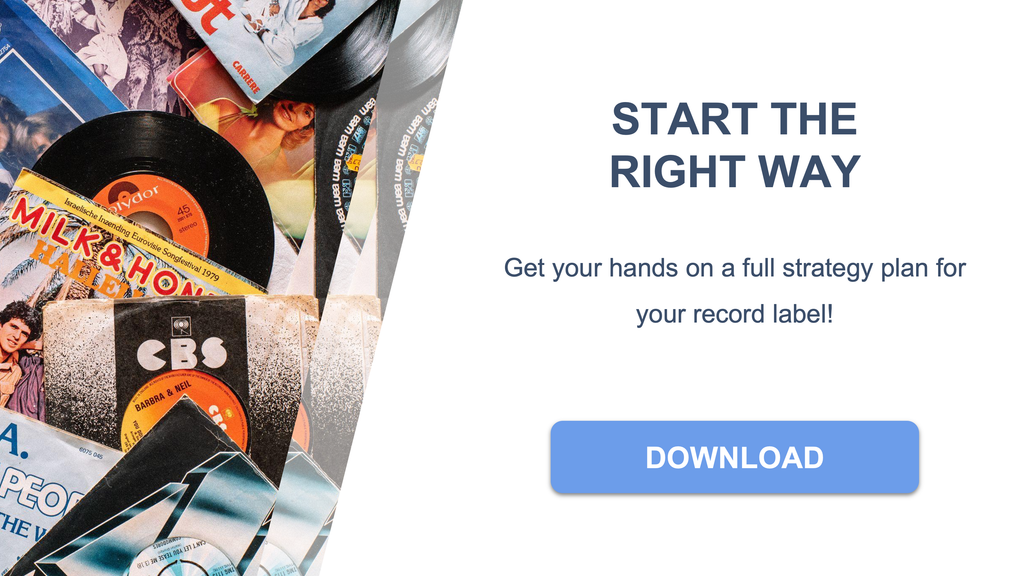If you’re starting a record label, understanding streaming revenue is crucial. Streaming has become the primary income source for many labels, and knowing how it works will help you optimize your revenue. Below is a straightforward guide to streaming revenue for record labels, including common questions that new labels often ask.

Our business plan for a record label will help you build a profitable project
Summary
Streaming revenue for record labels globally is growing fast, driven by platforms like Spotify, Apple Music, and YouTube Music. With more than 750 million global users, streaming now represents the bulk of industry income, especially in markets like the US, where it accounts for over 80% of the total revenue. Here are answers to some key questions that can help you understand how streaming revenue works for a record label.
| Category | Detail | Percentage of Total Revenue |
|---|---|---|
| Streaming | Streaming has become the dominant revenue stream for record labels worldwide, making up between 69% and 84% of total revenue, depending on the market. | 69-84% |
| Physical Sales | Physical sales, especially vinyl, make up a smaller part of total revenue, though it still accounts for a notable percentage. | 10-16% |
| Downloads | Downloads, while declining, still contribute to a small share of revenue for record labels. | ~3% |
| Publishing and Other Revenue | Revenue from publishing, performance rights, and sync licensing represents an important part of the total income. | 12-16% |
| Streaming Platforms' Market Share | Spotify leads the market, followed by Apple Music, Amazon Music, and YouTube Music. This split determines how revenue is distributed. | ~45% (Spotify + Apple Music) |
| Artist's Share | Typically, artists receive 15-25% of the label's streaming revenue, with independent deals offering higher shares. | 15-25% |
| Impact of Playlists | Playlists and algorithmic recommendations play a major role in driving streaming revenue, with over 30% of streams coming from these sources. | ~30% |
1. What are the total annual streaming revenues generated by the label across all platforms?
Global streaming revenue for record labels surpassed $20.4 billion in 2025, representing around 69% of the total recorded music revenue.
This substantial figure reflects the growth of streaming as the dominant income source in the music industry.
It is expected that this trend will continue as subscriber numbers and platform expansions increase globally.
2. How is the revenue split between major platforms such as Spotify, Apple Music, Amazon Music, YouTube Music, and others?
Spotify remains the largest platform, with approximately 31.7% of the market share. Other key players include Apple Music (12.6%), Amazon Music (11.1%), and YouTube Music (9.7%).
While Spotify and Apple Music together dominate the market, other platforms like YouTube Music and Amazon Music have been growing steadily.
The specific payout to the label will vary depending on the platform, but Spotify and Apple Music together account for around 45% of the US streaming market.
3. What percentage of the label’s overall income comes specifically from streaming compared to physical sales, downloads, publishing, and other revenue streams?
Streaming is the primary revenue stream for most labels, accounting for between 69% and 84% of total income.
Physical sales, mainly vinyl, contribute 10-16%, while downloads make up about 3%. The remainder comes from publishing and other rights.
Streaming's dominance is expected to keep growing, reducing the share of physical and download sales over time.
4. What is the average payout rate per stream across different platforms, and how do these rates vary by country?
Average payout rates per stream are different across platforms:
- Spotify: $0.00348 per stream
- Apple Music: $0.00675 per stream
- Amazon Music: $0.00426 per stream
- YouTube Music: $0.00154 per stream (ad-supported)
Payout rates vary by country, influenced by market maturity, local subscription costs, and licensing terms. Developed markets like the US, UK, and Germany typically see higher payouts compared to emerging markets.
5. How does the label’s distribution deal or aggregator agreement affect the percentage of streaming revenue retained by the label?
The distribution deal or aggregator agreement can have a significant impact on the revenue share between the label and the distributor.
Major distribution services may take 15-30% of revenue, while aggregators like CD Baby or DistroKid typically charge a 10-20% fee.
In most cases, the label retains 60-85% of the revenue after these deductions, depending on the deal terms.
6. What proportion of streaming revenue is allocated to artists, producers, and songwriters under the label’s standard contracts?
Under standard contracts, artists typically receive 15-25% of the net revenue from streaming, with songwriters and producers receiving additional shares.
In independent deals, the artist’s share can be as high as 80-90% of the revenue.
This percentage depends on the specific contract and can vary significantly between labels and artists.
7. How significant is the role of playlists, algorithmic recommendations, and editorial placements in driving streaming revenue for the label’s catalog?
Playlists and algorithmic recommendations are crucial for increasing streaming revenue. Over 30% of all streams now come from playlist placements.
Labels invest heavily in securing editorial placements and promoting their artists through algorithms and influencer partnerships.
Getting featured on popular playlists is one of the most effective ways to boost revenue from streaming.
8. What are the current industry benchmarks for cost per stream and average monthly listener value that the label should compare against?
The cost per stream typically ranges from $0.001 to $0.007, depending on the platform and the market.
Labels should aim for a monthly listener value of $1.50-$2.50, which is the average value of a paying subscriber.
Comparing these figures with industry benchmarks will help labels gauge the efficiency of their revenue generation strategies.
9. How does streaming revenue differ between new releases and the back catalog, and what share comes from long-tail consumption?
New releases generally generate a lot of attention and streaming volume, especially with playlist placements, but long-tail consumption from the back catalog now accounts for around 70% of total streaming revenue.
The back catalog provides a steady stream of revenue over time, with older tracks continuing to be discovered by new listeners.
As the catalog grows, it becomes a more significant part of the revenue mix, with lower-cost streams contributing to higher profitability.
10. What trends in subscriber growth, free vs. paid tiers, and regional expansion are most affecting streaming revenue forecasts for labels?
Paid subscriptions are growing faster than free tiers, particularly in developed markets, while free ad-supported streams are gaining traction in emerging regions like Asia and Africa.
Regional expansion is expected to fuel significant revenue growth, especially as local music content becomes more prevalent on global platforms.
Labels should watch these trends to adjust their strategies and maximize growth in these expanding markets.
11. What impact do recent legal or regulatory changes, such as royalty rate adjustments or new licensing rules, have on streaming income?
Recent changes, including royalty rate adjustments and new licensing rules, are starting to affect streaming income, particularly for independent rightsholders and songwriters.
For example, some regions have introduced higher minimum royalty rates, which could improve payouts in the future.
While some of these changes are still being implemented, labels should stay informed to adjust their business models accordingly.
12. What strategies can a label use—such as marketing spend, partnerships, or direct-to-fan campaigns—to maximize streaming revenue growth?
Labels can maximize streaming revenue by investing in targeted marketing campaigns, collaborating with influencers, and running direct-to-fan campaigns.
Promoting anniversaries, special editions, or viral campaigns on platforms like TikTok can also significantly increase streaming revenue.
Strategic partnerships with streaming services can offer opportunities for exclusive releases, boosting visibility and streams.
Conclusion
This article is for informational purposes only and should not be considered financial advice. Readers are encouraged to consult with a qualified professional before making any investment decisions. We accept no liability for any actions taken based on the information provided.
Related Articles:
- Record Label Complete Guide
- How Much Does It Cost to Start a Record Label?
- How Much Does It Cost to Start a Music Label?
- How to Start a Record Label with No Money
- Record Label Business Plan
- Record Label Customer Segments
- Tool to Budget for Your Record Label
- Record Label Business Model
- Record Label Profit Margin
- Music Industry Market Analysis

